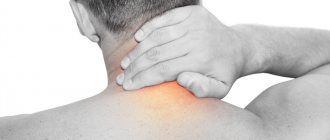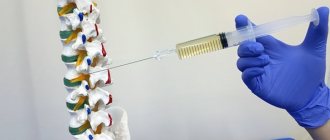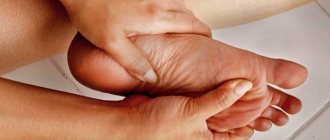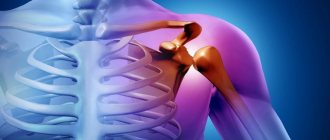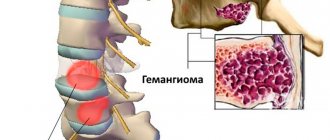One of the most serious complications after plastic surgery is capsular contracture. It involves the installation of implants in the hips, breasts, buttocks and other parts of the body.
When any foreign body enters the human body, a fibrous capsule begins to form around it. The same process occurs with implants. After surgery, a fibrous membrane forms around them for a certain time. Capsular contracture is an excessive thickening of this membrane, which leads to negative health consequences. This can happen with both silicone and saline implants.
At the Yusupov Hospital, qualified doctors will help patients cope with this unpleasant phenomenon.
Capsular contracture after mammoplasty
The main reason for this phenomenon is considered to be compression of the implant by the fibrous capsule. Basically, this process develops in the first year after the operation. Factors contributing to the appearance of capsular contracture may be:
- the formation of a hematoma after surgery, which leaves behind dense scar tissue;
- accumulation of fluid around the implant;
- inflammatory processes;
- The size of the implant does not correspond to the cavity in which it is placed. This leads to deformation and pressure on nearby tissues, and as a result, the formation of a fibrous capsule;
- if the implant is placed between the skin and muscles;
- smooth surface of the implant;
- If the implant shell ruptures, silicone particles can penetrate between the implant and the capsule.
At the Yusupov Hospital, surgeons pay special attention to the quality of operations. The risks of capsular contracture after mammoplasty are minimized.
Stages
Depending on the degree of destruction of the fibrous capsule, capsular contracture is divided into 4 stages:
- The first is the body’s normal reaction to the implant, the scar around it is flexible, thin, and the tissues are soft and no different from healthy ones.
- The second is that there is a barely palpable lump in the breast, but the implant is still palpable and is not deformed.
- Thirdly, the breasts thicken, change shape, take on an unnatural shape, and often become asymmetrical. The edges of the endoprosthesis are easily palpated, the woman may feel pain.
- In the fourth stage, when the scar tissue thickens significantly, the mammary gland becomes deformed and the breast becomes greatly flattened. Its shape changes and it takes on an unnatural appearance. The fibrous membrane hardens, becomes inelastic, and the pain intensifies at this stage.
Capsular contracture. Signs of the disease
In most cases, capsular contracture is unilateral, but it can develop in both mammary glands simultaneously. Shrinkage of the installed implant can be observed several years after the operation, but most often it occurs in the first year. The mammary gland takes on a triangular-conical shape and becomes very dense. Later, the shape changes to ovoid or round, which resembles a ball. Usually the process is accompanied by a feeling of discomfort and pain. In modern medicine, the following types of contracture are distinguished:
- early contracture. It develops during the first 12 months after implant placement. In many cases, the cause is a staphylococcal infection;
- late contracture. Occurs within several years after surgery. In this case, the reasons are associated with sweating or rupture of the silicone and the subsequent development of the inflammatory process.
In modern medical practice, the incidence of all cases with the phenomenon of capsular contracture is about 2% as a result of the use of embossed breast implants.
Prevention
To avoid capsular contracture, you should follow several rules when choosing implants and medical equipment, as well as when receiving professional advice on how to behave in the postoperative period.
- Perform special exercises to keep the implant from moving.
- choose more modern and safe implants
- Prefer porous implant models
- Prefer an underarm endoprosthesis, which reduces the risk of capsule thickening.
- Choose a trusted clinic that employs well-trained, experienced doctors and is equipped with the most modern, high-quality equipment and medicines.
- Choose medical institutions that have received positive reviews from clients who have already undergone mammoplasty.
- compression garments must be worn in the first month after surgery
- immediately after removing the sutures, use Contractubex, Dermatix or other similar drugs that help soften the scar and stimulate its resorption (however, you should consult your doctor and find out his opinion on this matter)
- Regular visits to the doctor in the first 6 months after mammoplasty to quickly begin treatment when the first signs of contraction of the joint capsule appear.
Capsular contracture. Treatment
The complex of therapeutic and surgical treatment that a specialist will prescribe will depend on how the compaction of fibrous tissue develops. Typically, in the early stages of capsular contracture, doctors try to avoid the need for surgery. The Yusupov Hospital uses endoscopic and conservative methods. In case of advanced problems, treatment is based on complete removal of the capsule and implants.
Treatment for the first degree of the disease is not required, as this condition is normal. In second-degree treatment, the situation is improved with the help of conservative procedures, such as injections of anti-inflammatory drugs, special breast massage, vitamin E intake, and physiotherapy.
For third and fourth degree contractures, surgical intervention is required. It is performed using the capsulectomy technique, which includes partial or complete removal of the fibrous membrane, while the implant is completely removed or replaced with a new one. And another method is capsulotomy, which involves reducing pressure on the implant and returning it to its normal shape.
In the most difficult situations, especially if the thickness of the fibrous membrane is significant, a complete or partial capsulectomy should be performed. Due to the high probability of relapse, replacement of the endoprosthesis is not performed after this. But in some cases, despite this, it is possible to reinstall the prosthesis in another bed. For example, doctors at the Yusupov Hospital can move the implant into a repeat cavity that is created in the area between the muscles. This area is practically not prone to fibrous formations. You can make an appointment with a clinic specialist by calling the Yusupov Hospital.
Types of capsulotomy
Capsulotomy is a surgical intervention for the formation of capsular contracture of breast implants. Correction is carried out using different methods:
- Open capsulotomy: access to the breast implant is direct; during the intervention, both the endoprosthesis itself and fibrous tissue are removed. The incision follows the plastic scar.
- Closed method. This is a minimally invasive operation. Fibrous tissue is removed through a puncture using a cannula. This method is used infrequently, because there is a risk of rupture of the endoprosthesis shell.
- Endoscopic capsulotomy. Excision of the fibrous membrane is carried out using an endoscope - a device inserted into the soft tissue through a puncture and transmitting an image of all manipulations in real time to the monitor. Provides complete visual control and minimal trauma to the bust.
Memo for preparing for mammoplasty: tests, prohibitions, recommendations
general information
One of the features of the human body is the formation of fibrous tissue around a foreign body. In this way, healthy cells try to protect themselves from external irritants.
In the case of mammoplasty, a capsule of fibrous cells begins to form around the installed implant. This is a normal reaction if the void between the foreign body and the breast does not exceed one tenth of a millimeter.
Over time, the capsule may increase in size, and this is a complication. Subsequently, the silicone breast is greatly deformed, changing its shape and structure to a more compact one.
Price
| Type of treatment | Average cost in rubles | |
| Surgical | 180-300 thousand | |
| Endoscopic | 50-80 thousand | |
| Alternative Methods | Massage complex | 6000—10000 |
| Injections, vitamins | 1500—3500 | |
| Physiotherapy | 500-1000 per session | |
The cost of a particular type of treatment is influenced not only by the qualifications of the specialist, but also by the neglect of a particular case.
The longer the mammary gland has been exposed to the fibrous capsule, the higher the cost of its correction will be.
Rehabilitation period
After capsular contracture (the forum contains many positive reviews), a rehabilitation period is necessary. Medical recommendations are selected individually for each patient, depending on the characteristics of the body. But there are also general rules for the rehabilitation period.
It is necessary to refrain from lifting weights for a while, go to physiotherapy and massage. Ice packs are used to reduce swelling. At first, you may need to wear special underwear or an elastic bandage. Medicines are taken only in strict accordance with the recommendations of the plastic surgeon.
Reasons for development
The occurrence of capsular contracture is influenced by many reasons. Sometimes this is due to incorrect actions by the surgeon during surgery.
Pathology can also be a consequence of exposure to external factors or an individual characteristic of the body.
The main reasons for the development of complications:
- incorrectly chosen surgical technique;
- during the intervention the bleeding was not completely stopped (residual hematomas);
- subcutaneous location of the implant instead of subfascial;
- bacterial infection;
- damage to the milk ducts during surgery;
- the formed pocket was smaller than the size of the implant;
- silicone prostheses with a smooth surface rather than a rough one;
- the body's tendency to rough scarring;
- implant rupture;
- disrupted hormonal levels;
- long-term use of certain medications;
- breast injury;
- heavy physical activity;
- persistent decrease in immunity due to alcohol intoxication and certain diseases.
All these factors can trigger a protective function in the body, due to which fibrous tissue will begin to form around the implant. Thus, the cells reject the foreign body.
From the video, find out the opinion of a specialist about the reasons for the development of capsular contracture.
Possible consequences
The risk of postoperative complications always exists. Even if the doctor is appropriately qualified and the patient follows all the recommendations, health problems can still occur.
Of course, if all conditions are met, the likelihood of their occurrence is significantly reduced and does not account for more than 5% of all clinical cases.
Types of complications and methods of dealing with them:
- Getting infected. It manifests itself as excessive pain. The tissues are hyperemic and swollen.
In severe situations, pus may separate from the nipple when pressure is applied to the mammary gland. A complication occurs due to non-compliance with asepsis rules or improper care of the postoperative wound. Antibacterial agents are prescribed for treatment. If there is pus, surgical removal is indicated. - Bleeding. If hemostasis was performed incorrectly during surgery, blood may leak under the implants and form hematomas.
This complication is also observed in diseases associated with blood clotting disorders. The problem is solved with the help of physiotherapy, and in severe cases - a scalpel. - Implant rupture. Occurs due to dense fibrous formation or severe trauma to the chest. The problem can also be solved in the surgeon's office.
If, after repeated surgical intervention, the capsule forms again and causes significant discomfort to the patient, the question is raised about the intolerance of the implant by the body.
Rehabilitation
The rehabilitation period after capsulotomy takes no more than 1.5-2 months. For the first time after the intervention, it is necessary to wear supportive compression garments, which will prevent the breast implant from moving.
In addition, antibiotics, vitamins and anti-inflammatory injections are prescribed. Medicines help reduce the risk of reappearance of the dense fibrous capsule.
Also, to prevent relapse, competent doctors advise massage of the mammary glands. You can start exercises no earlier than 2-4 weeks after surgery, with the permission of the surgeon.
What not to do during the rehabilitation period:
- drink alcohol, smoke;
- engage in strenuous sports;
- injure the mammary gland;
- become pregnant;
- carry out serious thermal procedures;
- wash in a hot bath;
- sleep on your stomach;
- take any medications without the doctor's permission.
The result after surgery partly depends on how carefully the patient follows the recommendations.
A mandatory step during rehabilitation is visiting a plastic surgeon on a regular basis. The specialist must evaluate how the tissue is healing in order to take appropriate measures if necessary.
